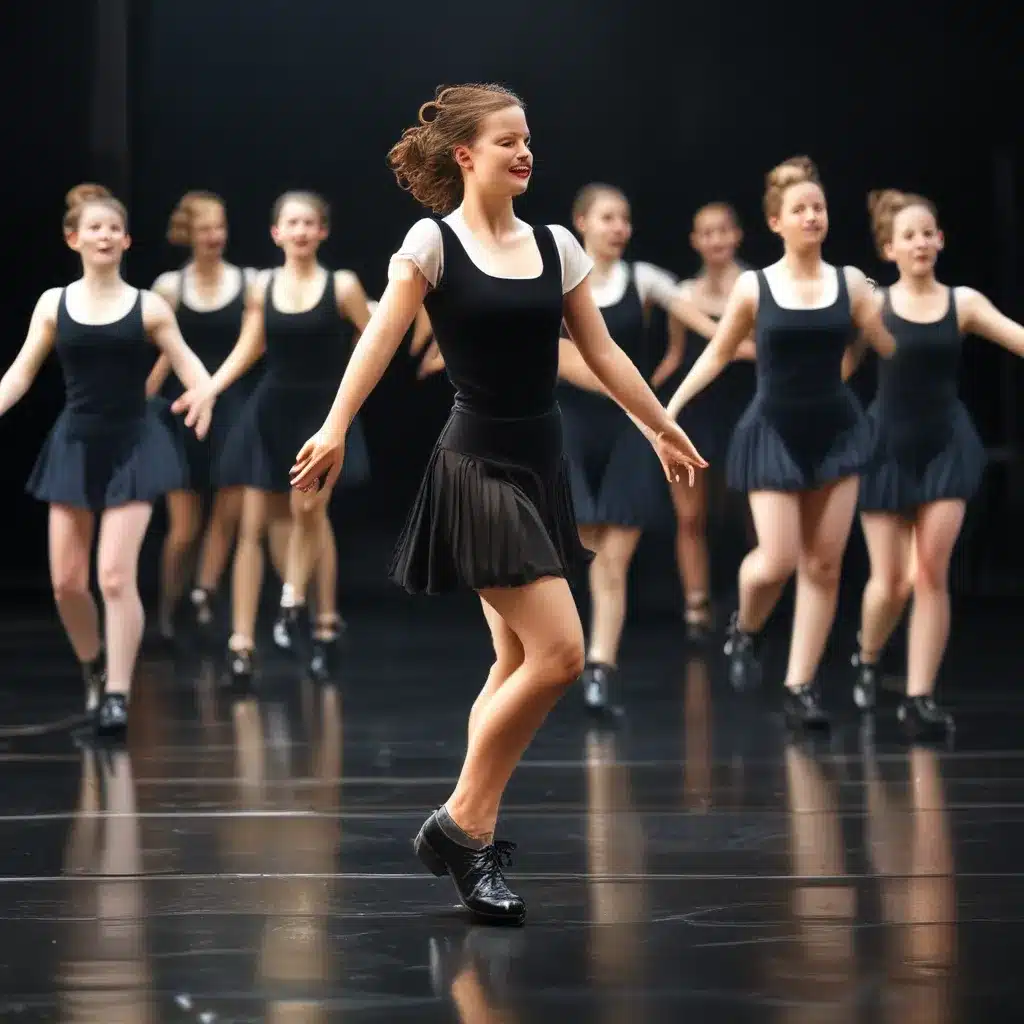
Tapping into the Heartbeat of Musical Theater
As I stepped onto the stage, the wooden floor beneath my feet felt electric with anticipation. The curtain rose, and the audience leaned forward in their seats, captivated by the thunderous rhythm of my tapping feet. In that moment, I knew that tap dance was not just a performance technique – it was the very lifeblood of the musical theater experience.
Over the years, I’ve had the privilege of witnessing the evolution of tap dance, from its humble origins in the streets of America to its rightful place as a revered and integral part of the musical theater canon. At Dance Theatre Northwest, we pride ourselves on embracing the dynamism of tap dance and incorporating it into our rigorous training program. After all, what is a musical without the infectious energy and infectious rhythms that only tap can provide?
The Rhythm-Driven Origins of Tap Dance
To truly understand the role of tap dance in musical theater, we must first delve into its rich history. The roots of tap dance can be traced back to the early 19th century, when enslaved Africans in the United States blended their traditional rhythmic dances with the percussive footwork of Irish and English immigrants. This fusion of cultures gave birth to a uniquely American art form, one that would go on to captivate audiences around the world.
As the decades passed, tap dance evolved and transformed, adapting to the changing tides of popular culture. In the early 20th century, the emergence of vaudeville and the rise of Broadway musicals provided a perfect stage for tap dancers to showcase their virtuosic skills. Legendary performers like Bill “Bojangles” Robinson, Fred Astaire, and Ginger Rogers mesmerized audiences with their mesmerizing routines, seamlessly weaving tap into the fabric of musical theater.
The Synergistic Relationship of Tap and Musical Theater
The relationship between tap dance and musical theater is a symbiotic one, with each art form amplifying and enhancing the other. Tap’s rhythmic complexity and infectious energy perfectly complement the melodic and narrative elements of musical theater, creating a dynamic and immersive experience for the audience.
In a well-crafted musical, the tap dancer is not merely a supporting player, but a central component that drives the story forward. The rhythmic patterns and percussive footwork become a language unto themselves, conveying emotions, advancing the plot, and even shaping the musical landscape.
Take, for example, the iconic “42nd Street” from the 1980 musical of the same name. As the chorus of tap dancers thunders across the stage, their rhythms mirroring the pulsing energy of the city, the audience is swept up in a whirlwind of excitement and anticipation. The tap sequence becomes a celebration of the resilience and determination of the show’s protagonists, embodying the very essence of the musical theater experience.
Tap Dance: A Versatile Performer’s Tool
But tap dance’s role in musical theater extends far beyond the show-stopping ensemble numbers. It is a versatile performer’s tool, one that can be used to convey a wide range of emotions and character traits. A skilled tap dancer can embody the playful innocence of a young ingénue, the sly mischief of a charming rogue, or the stoic determination of a hardened veteran.
Take, for example, the character of Cosmo Brown in the 1952 classic “Singin’ in the Rain.” Played by the incomparable Donald O’Connor, Cosmo is a delightfully eccentric sidekick whose tap dancing prowess is as much a part of his personality as his quick wit and infectious humor. In the film’s iconic “Make ‘Em Laugh” sequence, O’Connor’s virtuosic tap routine becomes a physical manifestation of Cosmo’s boundless energy and joie de vivre, captivating the audience and leaving them in awe of his sheer talent.
Tap Dance: A Cornerstone of Musical Theater Education
At Musical Theater Center, we believe that tap dance is not just a performance art, but a fundamental component of a well-rounded musical theater education. That’s why our curriculum places a strong emphasis on tap, ensuring that our students develop the skills and techniques necessary to thrive in the ever-evolving world of musical theater.
Our tap dance classes, led by seasoned instructors with deep roots in the art form, challenge students to push the boundaries of their abilities. Whether they’re mastering the intricate rhythms of a classic Broadway standard or exploring the improvisational possibilities of contemporary tap, our students leave each class with a renewed sense of confidence and a deeper appreciation for the power of this dynamic art form.
Embracing the Dynamism of Tap Dance
As I reflect on my own journey in the world of musical theater, I can’t help but marvel at the way tap dance has continued to captivate and inspire me. From the infectious energy of ensemble numbers to the nuanced character work of solo performances, tap has the power to transport the audience and leave an indelible mark on the human spirit.
At Musical Theater Center, we are committed to celebrating the dynamism of tap dance and ensuring that it remains a vital and vibrant part of the musical theater experience. Whether you’re a seasoned performer or a budding artist, I invite you to join us on this journey of discovery and embrace the joy and power of this truly remarkable art form.

